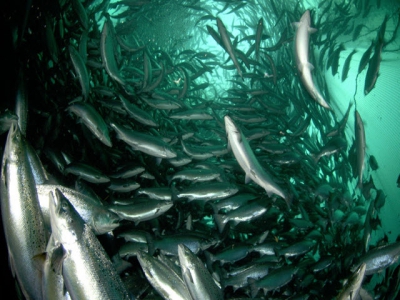Fresh insights into salmon feeds

Three recommendations for salmon diets have been given by Nofima researcher Jens-Erik Dessen following a number of extensive field trials.
The trials, which lasted up to 18 months, were performed as part of his doctoral studies in small-scale at Averøy Research Station and in large-scale at Nofima’s research facilities in southern, central and northern Norway.
His recommendations were:
“Smolt transferred to sea in spring require high dietary energy and high protein content during the early seawater phase for optimal growth performance.”
“Increased dietary protein-to-lipid ratio could be utilized during the first spring and summer in sea for sites with high risk of pancreas disease outbreaks to improve survival and reduce the accumulation of severely thin diseased fish (runts).”
“High fat content in the fish, especially in early autumn, reduces the long-term growth potential.”
Put simply, fish farmers want to get the most out of their inputs – the fish and feed. However, fish farming is influenced by environmental conditions, operating form, smolt quality and infectious diseases – all of which vary widely.
“The experiments lasted up to a year and a half, in order to identify important connections, giving us unique insight into how variables in the environment, feed and fish affect the production,” says Dessen.
He has studied at how the protein and fat content in the feed affects growth, feed utilization, health, quality and fat deposition in farmed salmon. This was done to identify good balances in the dietary protein-to-lipid ratio related to different seasons and periods with high risk of viral diseases, in particular pancreas disease.
Nofima’s partners in the trials were Blom fiskeoppdrett AS, Nordlaks oppdrett AS, Lerøy Midt and BioMar.
Related news
 Salmon farmer replaces dietary fish oil with marine algae
Salmon farmer replaces dietary fish oil with marine algae Norwegian salmon farmer begins commercial production of salmon fed on omega-3 marine algal oil.
 Can breeding science revolutionise shellfish production?
Can breeding science revolutionise shellfish production? Dennis Hedgecock, founder of Pacific Hybreed, hopes to bring cutting-edge breeding science to the US west-coast shellfish sector, to ensure the long-term succes
 Sensor can improve fish welfare during delousing
Sensor can improve fish welfare during delousing Norwegian researchers have developed an electronic “sensor” fish to measure how mechanical delousing impacts salmon.